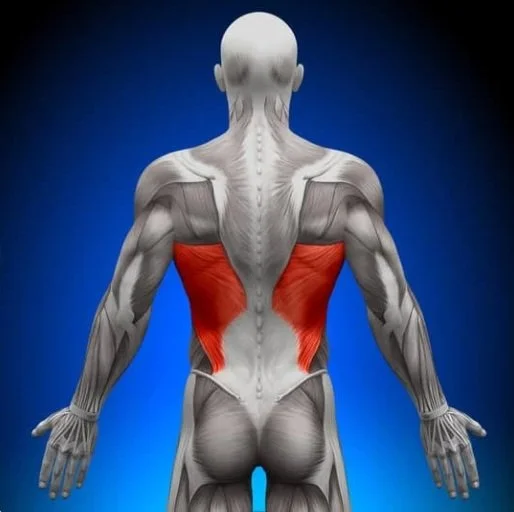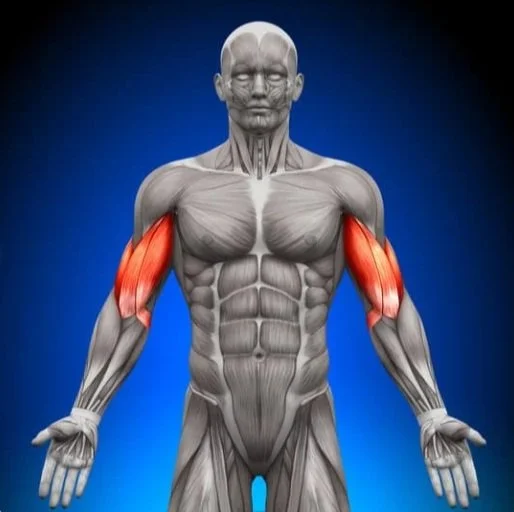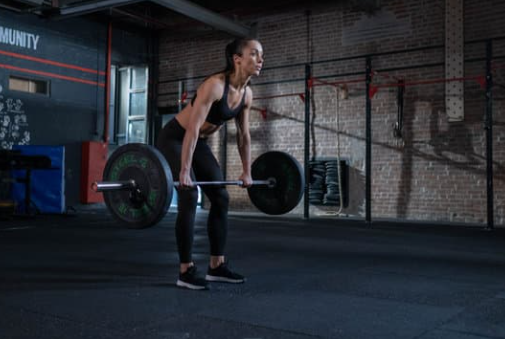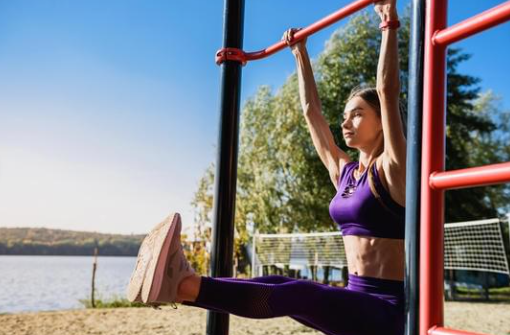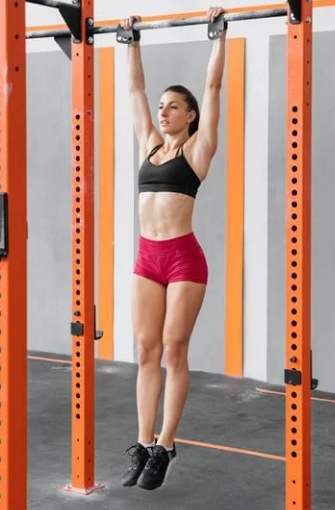How To Get Your First Pull-Up
Achieving your first pull-up is a significant fitness milestone and definitely worth celebrating, but they are hard as hell. How do you go from hanging there like a confused sloth to pulling yourself up like a pro? This article will provide you with a step-by-step plan to help you reach this goal, covering everything from the muscles involved, how to progress in your exercises, proper form, and how to create an effective program
Prime Movers
Latissimus Dorsi (Lats): The largest muscle in your back, crucial for the pulling motion. These are the primary muscles responsible for pulling the arms down and back during a pull-up.
Biceps: They assist in elbow flexion (bending the elbow to bring the forearm towards the upper arm).
Secondary Movers
Trapezius: A major muscle of the upper back and neck. Important for scapular retraction and stabilization.
Rhomboids: Located between your spine and shoulder blades, they help retract the scapula, pulling your shoulder blades together.
Deltoids: The shoulder muscles, particularly the rear deltoids, assist with shoulder extension (moving the arm backward) and stabilization.
Pectoralis Major (lower fibers): While the lats are the primary movers in a pull-up, the pecs work synergistically with the back muscles to create a more powerful and coordinated pulling action.
Brachialis and Brachioradialis: Muscles of the forearm that assist in elbow flexion and grip strength.
Core Muscles: The core muscles help stabilize the body during the pull-up movement.
Building Foundational Strength
Now that we know which muscles are utilized in a pull-up, we have to find the best exercises to train them. Here are some useful exercises to start with that will build the foundational strength needed for pull-ups. These are great accessory exercises to add to a program to reach your goals.
Lat Pulldowns
Mimics the pull-up motion, focusing on the lats and biceps.
Dumbbell Rows/Barbell Rows
Targets the upper back, lats, and biceps.
Bicep Curls
Strengthens the biceps, aiding in elbow flexion during pull-ups.
Hollow Body Hold
Strengthen the entire core, and teaches you to maintain a tight, rigid body position, which is crucial for performing pull-ups efficiently.
Hanging Leg Raises
Strengthens abs, and your grip.
Progress to a Pull-up
Pull-ups are undeniably challenging, and we’re not all at the same experience level. Many people are unsure where to begin or what exercises to include to build the necessary strength. It's best to start with simpler exercises and gradually increase the difficulty as your strength improves. Here are some examples of exercises you can incorporate into your routine that will have great carry over to a pull-up.
Dead Hangs
Dead hangs will build your grip strength, and help strengthen the muscles around the shoulder joint, including the rotator cuff and scapular stabilizers. Hang from the bar as long as you can and try to increase your hang time over time.
Scapular Pull-Ups
To perform a scapular pull-up, start in a dead hang position. From there engage your shoulders and pull them back and down, raising your body slightly without bending your elbows. It’s like a mini-pull-up, or a pull-up for your shoulders. This will teach you how to engage your upper back muscles properly, and will translate to better pull-up form.
Inverted Rows
Inverted Rows are one of my favorite exercises to include if you are working toward your first Pull-up. They are easy to progressive overload and you can increase the difficulty pretty easily.
These exercises can be performed using a barbell in a rack, TRX bands, or rings. To make them easier, position yourself at a more upright angle. If using a barbell, set it higher in the rack. With TRX straps, step further away from the anchor point. As you gain strength, progressively increase the difficulty by lowering your body closer to parallel with the floor. Eventually, you can place your feet on a bench to achieve a full horizontal position or raise your feet even higher to make the exercise even more challenging.
Floor or Box Assisted Pull-ups
With these you’ll be using some of your legs to help you perform the exercise. As you get stronger, you’ll want to use more of your upper body, and less of your lower. For floor assisted pull-ups start with a barbell in a rack and squat under the bar. Pull-your chin over the bar by using as much of your upper body as possible. Box assisted are very similar except you’ll be standing on a box underneath a pull-up bar.
Band Assisted Pull-ups
I think band assisted pull-ups are great to add to a pull-up focused program, but I wouldn’t over rely on them. I feel like these can be used too much, and there are other exercises that should be included if you’re serious about getting your first pull-up, but I still think they are very valuable, and shouldn’t be ignored either.
I like band assisted more than machine assisted, because you’ll be using more of your core, and it translates better to an actual pull-up, because the movements are very similar with your feet hanging down, instead of kneeling on a platform.
One of the benefits I appreciate about these is that you can adjust the resistance and difficulty by using a lighter band. It’s important to find exercises that can be made more challenging, so you can continue to progress.
Isometric Pull-ups
These are great for building your upper body strength, to help you get closer to your first pull-up. For these I would use something to get your chin over the bar. You can either jump or use a box to get you there. However you choose to do it, get your chin over the bar and hold yourself there for 3-10 seconds, and then drop down and repeat for the desired number of reps.
Another way to use these is pause at your sticking point. So if you can only do a half pull-up, pull yourself up to that point and then hold yourself there for 3-10 seconds, and then lower yourself and repeat. This will help strengthen your weak spots.
Negative Pull-ups
These are the most challenging of all of the exercises I just listed, but they will definitely build the strength needed for your first pull-up. I think these have the best carry over to pull-up strength.
To do a negative pull-up, jump or use a chair to get to the top of the pull-up position, then slowly lower yourself down. Aim for a 3-6 second descent. You may find at first that you feel like a floppy fish while performing this exercise, but you will build up the strength and control needed as you continue to practice.
Pull-Up Form
Once you’re ready to test your strength and see what you got, of course you want to do it with the proper technique. There are a couple of variations you can try. A standard pull-up is with a pronated grip and your palms facing away from you, a chin-up is a supinated grip with your palms facing you, and a neutral grip is with your palms facing each other. I recommend starting with a chin-up or neutral grip, because they will be easier.
Starting Position: Start in a dead hang with your arms shoulder width or slightly wider apart. Slightly retract your scapulae (shoulder blades) to engage your shoulders and stabilize your upper body. Tighten your core muscles to keep your body stable and prevent swinging.
Pull-Up Movement: Begin the movement by pulling your shoulder blades down and back, then bend your elbows to pull your body upward. Imagine pulling with your elbows to engage your back muscles more effectively. Your elbows should stay close to your body, not flaring out to the sides. Pull until your chin is above the bar.
Lowering Phase: Lower yourself slowly and with control all the way down to the starting position and repeat.
Helpful Cues: A trick that can help you engage the right muscles, and use proper form is imagine you are pulling the bar down to you, instead of you to the bar. Also, imagine you are trying to crush oranges with your armpits. That will help you engage more of your lats which is going to be important in getting you up over the bar.
Common Mistakes to avoid: Swinging, shrugging your shoulders, flaring your elbows, arching your back, and not going through a full range of motion.
Other Helpful Tips and Tricks
Grease the Groove
Greasing the groove is a method that can be implemented with pull-ups that involves doing submaximal sets throughout the day. For example, if you can do 5 pull-ups, do sets of 1-2 pull-ups several times a day. If you can’t do any pull-ups then pick one of the exercises I listed above and perform it submaximally every day. If you can do 10 banded pull-up, maybe you do 5 for a couple of sets per day.
Strength is a skill and frequency will improve neural adaptations, making the pull-up movement feel more natural. Think of it like practicing free throws, the more you practice, the better you become.
Heavy Sets
Performing exercises in the lower rep ranges with heavier weights is the best way to improve your strength. That doesn’t mean that performing 8-12 reps of an exercise won’t improve your strength at all, but it’s not going to be optimal. Increase the difficulty of exercises, so that they are challenging at a lower rep range. For example, if you can do 10 reps of an inverted row, lower the bar or raise your feet up, so that you may only be able to get 5 reps. This will improve your strength quicker.
Chin-Ups or Neutral Grip Pull-ups
Chin-ups and neutral grip pull-ups are generally easier to perform than a standard pull-up, so I would work towards performing one of those first, and then try standard pull-ups.
Programming
If you are serious about getting your first pull-up then you have to make it a priority in your training. It can’t be an afterthought. I recommend performing a couple of sets of a pull-up style exercise at the beginning of each workout. You’ll be fresh for the exercise, so you’ll be able to give it your full effort. Frequency is important, so make sure you perform these exercises multiple times per week.
If you want more direction, and a program laid out for you, then you’re in luck. We just added a pull-up program into the squad. The squad is our affordable online group training program that includes numerous programs to choose from. For more details on that click here and you’ll get a two week free trial. If not, use the info above to create your own program and hit that milestone. Good luck! You got this!

